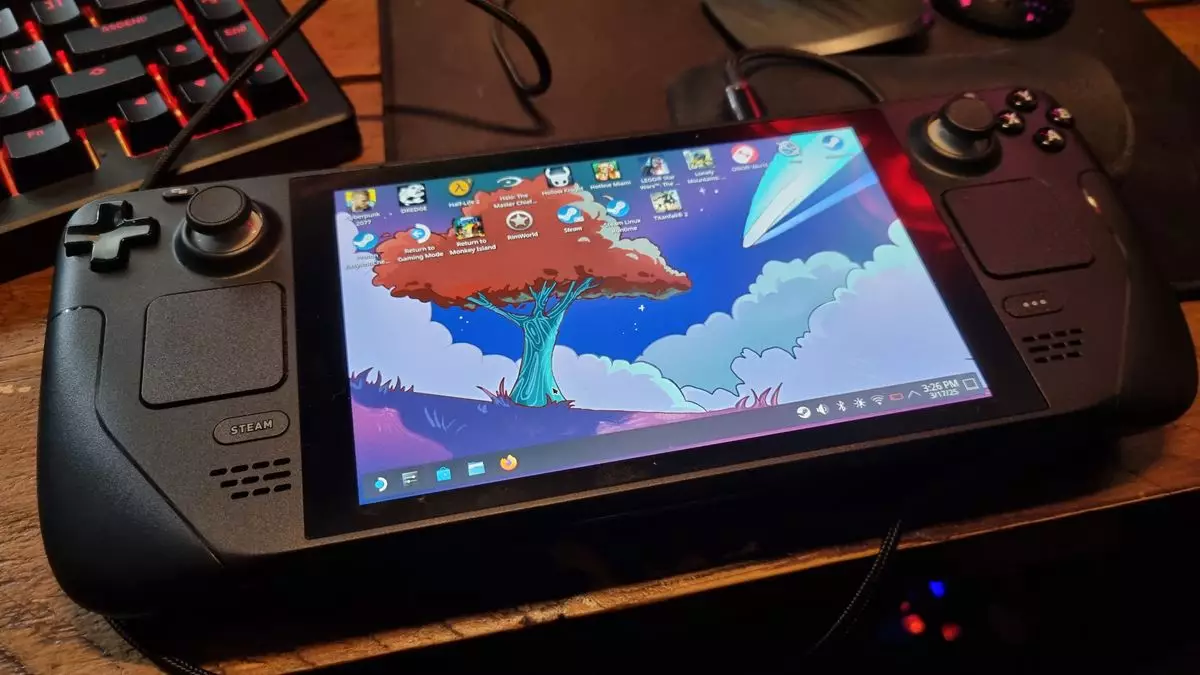Since its debut in 2022 alongside the highly anticipated Steam Deck, SteamOS 3.0 has garnered attention for its unique position within the gaming landscape. Yet, the world of handheld gaming extends beyond the confines of Valve’s flagship device. As the anticipation builds for the Lenovo Legion Go S, set to launch with SteamOS in May, gamers are left to wonder: how will Valve harness the potential of its Linux-based operating system for other handhelds? The latest SteamOS 3.7.0 Preview update, affectionately dubbed the “Pi Day” update, hints at promising developments.
This update introduces us to the “beginnings of support for non-Steam Deck handhelds,” an announcement that could revolutionize the handheld gaming experience. The Lenovo Legion Go S is currently the sole device linked to this burgeoning support, yet the mere prospect of future devices joining its ranks creates a ripple of excitement. The question still lingers: is Valve moving quickly enough, or has it missed the boat?
The User Experience: Glimpses of Improvement
The addition of Plasma 6.2.5 represents more than mere version numbers; it’s an upgrade in user experience that beckons players to explore. With a revamped interface featuring elegant floating panels and an overhauled settings menu, one cannot ignore the effort made to elevate the gaming experience. For those nostalgic enough, the return of the iconic cube effect evokes a sense of retro charm that harkens back to the glory days of computing. It conjures images of a simpler time when technology was almost magical.
Yet, as with all software updates, this Preview version brings with it an element of unpredictability. Users, including myself, have encountered various glitches that can disrupt the gaming flow. A misplaced power button press may lead to an unintended desktop flash, or your device might suddenly hang. While such bugs are frustrating, they are to be expected during preliminary phases. On the brighter side, there’s a new wallpaper to inject a bit of style into this technological canvas. Entitled “Scarlet Tree,” it serves as a visual treat for those willing to navigate through the rough patches.
Beyond the Deck: An Encouraging Future
Valve’s comprehensive approach extends beyond mere user experience improvements. Fixes to Bluetooth devices, enhance compatibility with displays via the Deck Dock, and rectifying issues surrounding system updates all point towards a commitment to refining the platform further. While seasoned Steam Deck users may not find these changes immediately thrilling, they pave the way for the adoption of SteamOS on other handheld devices, infusing life into the market dynamics that often feel stale.
However, a crucial question remains: with the proliferation of non-SteamOS handheld gaming PCs, have we reached a point of no return? Many alternatives now come bundled with their own interfaces, flawless in their ability to launch and categorize games. Additionally, Windows 11 has made strides in streamlining the gaming experience, reducing the incentive to switch to SteamOS. Even with its buttery-smooth integration and user-friendly interface, the competition is fierce, and Valve must remain vigilant.
Navigating the Future: Opportunities and Challenges
While the ambition to expand SteamOS beyond the confined borders of the Steam Deck is commendable, one wonders if Valve’s timing might be off. Gamers now have a plethora of options at their disposal with non-Steam interfaces that are efficient, if not fully integrated with Steam’s vast library. Valve’s challenge will not only be to attract gamers to its ecosystem but also to ensure that newcomers enjoy a seamless transition.
Despite the inherent risks associated with releasing at this stage, the embrace of others within the handheld market could foster innovation. The thirst for integration between platforms and the versatility of gaming experiences could lead to a true renaissance in portable gaming.
Seeing SteamOS evolve with robust support for multiple devices could undoubtedly reinvigorate the market. Valve has a unique opportunity to stoke the flames of this evolution, and, while they may be behind the curve currently, there is a flickering light of potential that may yet illuminate our path forward in the handheld gaming arena.

